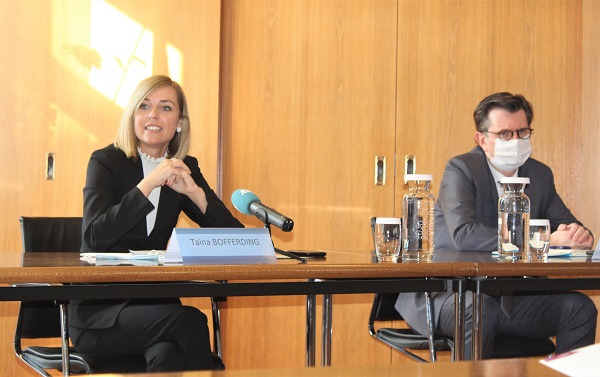 L-R: Taina Bofferding, Luxembourg's Minister of the Interior; Alain Becker, Ministry of the Interior;
Credit: MINT
L-R: Taina Bofferding, Luxembourg's Minister of the Interior; Alain Becker, Ministry of the Interior;
Credit: MINT
Luxembourg's Ministry of the Interior has published details on the new national plan for the organisation of emergency services.
On Thursday 4 March 2021, Taina Bofferding, Minister of the Interior, presented this new national plan to the press. The minister confirmed that the main aim was to reduce the response time of the Grand-Ducal Fire and Rescue Corps (Corps grand-ducal d'incendie et de secours - CGDIS) to fifteen minutes "anywhere in the country in the event of an emergency".
Minister Taina Bofferding recognised that this ambition was not free, but that it also represents a necessary investment in civil security. To achieve the flagship objective of the national emergencies plan and to cope with the potential risks listed therein, the minister stressed that it was imperative to have sufficient human resources, appropriate infrastructure and stable and predictable financial means. She added that the cornerstone of the CGDIS will always remain the voluntary commitment of more than 4,000 women and men, which must be maintained at all costs.
A first draft national plan for the organisation of emergency services was drawn up in 2012 and its conclusions fed into the work on Bill 6861 which led to the creation of the CGDIS. The current national plan, which takes into account the first analyses made in the past, follows on from the amended law of 27 March 2018 on the organisation of civil security, which reformed the emergency services and created the CGDIS.
On 1 March 2021, the draft of this new national plan was sent to the 102 municipalities of the country, among others, which now have three months to give their opinion on the document. During a webinar taking place on 25 March 2021, local elected officials will have the opportunity to ask questions related to the national plan for the organisation of emergency services.








